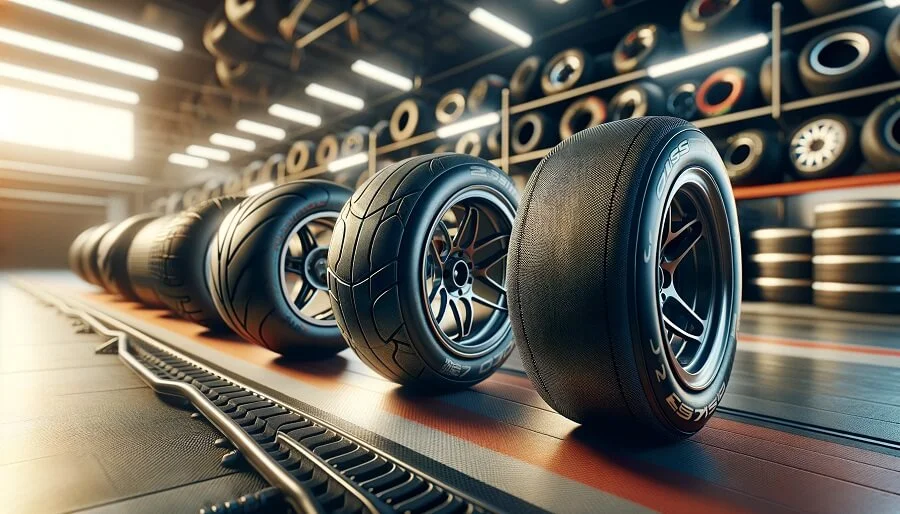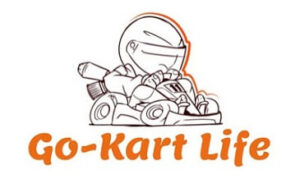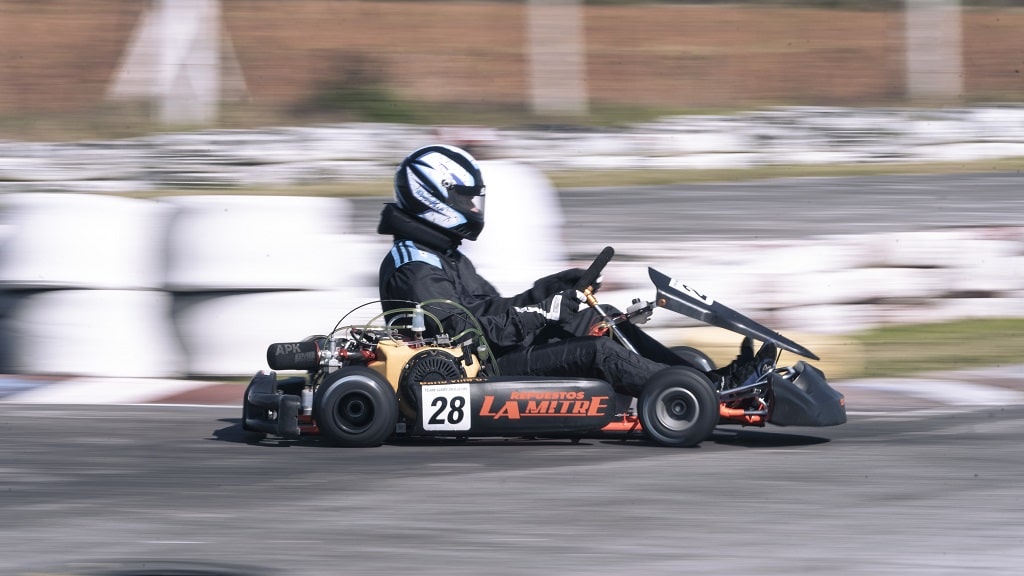If you’ve ever wondered why go-karts have small wheels, you’re not alone. We’ll explore the reasons behind this design choice and the advantages it brings.
Small wheels offer benefits like better handling and maneuverability, faster acceleration, and more responsive steering for go-kart enthusiasts. However, there are drawbacks to consider such as limited top speed and a bumpier ride.
Let’s dive into the world of go-karts and discover the impact of small wheels on these fun vehicles.

Key Takeaways:
- Small wheels on go-karts provide better handling and maneuverability, allowing for faster acceleration and more responsive steering.
- They also have a lower center of gravity, improving cornering ability and making maintenance more affordable.
- However, small wheels may limit top speed, result in a bumpier ride, and be prone to damage on rough terrain, making them not suitable for all driving conditions.
Why Do Go-Karts Have Small Wheels?
Have you ever wondered why go-karts have small wheels? The design of go-karts with smaller wheels has specific advantages and reasons behind it. One of the main reasons for the smaller wheels on go-karts is related to the concept of ‘karting’, where precision and agility are key.
Smaller tires allow for better handling and maneuverability, especially around tight corners and tracks with sharp turns. The reduced rotational inertia of smaller wheels results in quicker acceleration and deceleration, enhancing the overall performance of the go-kart.
Related Article: How to Align Go-Kart Wheels: A Comprehensive Guide
Better Handling and Maneuverability
The use of smaller wheels in go-karts contributes to enhanced handling and maneuverability on the racetrack, allowing drivers to navigate corners with precision.
One of the key advantages of smaller wheels on go-karts is their impact on cornering performance. With reduced wheel diameter, the go-kart can take sharp turns more smoothly, maintaining stability throughout the maneuver. This improved cornering capability is crucial in competitive racing, where fractions of a second can make a significant difference.
The smaller wheels enhance traction by increasing the pressure exerted on the racing surface. This translates to better grip, especially when accelerating out of corners or navigating challenging terrain. As a result, drivers experience enhanced responsiveness, enabling them to make quick steering adjustments with confidence.
Lower Center of Gravity
One of the key benefits of small wheels on go-karts is the lower center of gravity they provide, enhancing stability, acceleration, and overall performance on the track.
When a go-kart is equipped with smaller wheels, the center of gravity is effectively lowered, making the vehicle less prone to tipping or rolling during sharp turns or sudden maneuvers. This increased stability not only improves the handling but also contributes to a smoother acceleration, allowing the kart to maintain speed more efficiently.
The chassis of a go-kart is crucial for maintaining control and maneuverability. With smaller wheels that help lower the center of gravity, the chassis can work more effectively to distribute weight and handle the forces generated during acceleration and deceleration, resulting in improved overall performance on the track.
Less Weight
The use of smaller wheels reduces the overall weight of go-karts, which can lead to improved traction, faster lap times, and increased efficiency in motorsport competitions.
Smaller wheels play a crucial role in the weight reduction of go-karts, contributing significantly to their agility and handling. With lighter components, the go-kart becomes more responsive to driver inputs, enhancing its cornering capabilities and overall performance on the track. This weight reduction translates directly to improved acceleration and deceleration, allowing drivers to navigate corners more efficiently.
The decreased rotational inertia of smaller wheels enables quicker changes in direction, giving drivers a competitive edge in intense motorsport events. Lighter go-karts are also easier to control, providing drivers with a better feel for the track surface and enhancing their ability to maintain optimal racing lines.
Lower Cost
Another advantage of small wheels on go-karts is the lower cost associated with maintenance and replacement, making them a more affordable option for racers and karting enthusiasts.
Smaller wheels are generally less expensive to replace and maintain compared to larger wheels, mainly due to their simplified construction and reduced material costs. This cost-effectiveness extends beyond just the initial purchase price, offering long-term economic benefits for individuals and racing teams alike.
By opting for smaller wheels, racers can enjoy significant cost savings in the form of reduced upkeep expenses, creating a more sustainable and budget-friendly approach to karting.
What Are The Advantages Of Smaller Wheels On Go-Karts?
Understanding the advantages of small wheels on go-karts sheds light on why these components play a crucial role in optimizing performance and driving experiences.
Small wheels contribute significantly to go-kart performance due to their role in providing faster acceleration and enhancing cornering abilities. When small wheels are used, the lower rotational inertia allows for quicker acceleration, enabling the go-kart to reach higher speeds more swiftly.
The reduced mass of smaller wheels results in improved responsiveness during steering maneuvers, allowing for more precise control and agility on the track.
Faster Acceleration
Small wheels on go-karts facilitate faster acceleration, thanks to enhanced torque delivery, optimal power-to-weight ratios, and improved traction on various track surfaces.
In terms of accelerating quickly in go-karts, the dynamics of design play a crucial role. The smaller wheels allow for quicker responses to driver inputs, translating to rapid bursts of speed off the line. This agility stems from the compact size of the wheels, which reduces rotational inertia and enables the engine’s power to be harnessed effectively.
The improved traction offered by these smaller wheels ensures that the go-kart can grip the track surface better, further maximizing the torque transfer and propelling the vehicle forward with precision.
Better Cornering Ability
The small wheels on go-karts enable superior cornering ability, allowing drivers to navigate tight corners with enhanced agility and precision on the racetrack.
These compact wheels play a crucial role in enhancing the go-kart’s maneuverability, especially in challenging corners where traditional vehicles might struggle. With their reduced mass, the small wheels provide responsive handling, allowing drivers to make quick and precise turns without losing momentum.
The increased grip from the small wheels further aids in maintaining traction as drivers push the limits of their kart’s capabilities, helping them maximize speed through corners and ultimately shave valuable seconds off their lap times.
More Responsive Steering
Small wheels contribute to more responsive steering in go-karts, making it easier for drivers to tackle hairpin turns and execute quick maneuvers without compromising stability.
When navigating tight corners, the reduced mass of small wheels allows for quicker response to steering inputs. This means go-kart drivers can deftly maneuver through challenging sections of the track, maintaining control and precision in their movements.
The maneuverability provided by small wheels also enables drivers to shift directions swiftly, essential when aiming to overtake opponents or correct a line mid-race. The emphasis on lightweight, small wheels in go-karts contributes significantly to their agility and responsiveness on the track.
More Affordable Maintenance
The use of small wheels results in more affordable maintenance for go-karts, with reduced costs associated with tire replacements, chassis upkeep, and overall racer expenses.
One of the key ways small wheels contribute to cost-effective maintenance in go-karts is through the savings on tire replacements. The smaller wheels typically wear out tires at a slower rate compared to larger wheels, leading to decreased expenses in regularly changing tires.
The design of small wheels often enhances chassis durability, reducing the need for frequent repairs or replacements. This not only saves money on maintenance but also ensures that the go-kart’s chassis remains strong and reliable, providing long-term benefits for racers in terms of performance and cost-efficiency.
Are There Any Disadvantages To Small Wheels On Go-Karts?
While small wheels offer numerous benefits, they also come with certain disadvantages that need to be considered to make informed decisions regarding their use in go-karts.
One major drawback of small wheels in go-karts is their limited top speed capabilities compared to larger wheels. The smaller diameter leads to fewer revolutions per distance traveled, restricting the maximum speed attainable on straightaways. The reduced wheel size can result in a bumpier ride for the driver, particularly on uneven terrain or rough surfaces.
This compromises the overall ride comfort and may impact driver performance. Small wheels are more susceptible to damage on rough surfaces due to their limited ground clearance, making them less suitable for off-road or challenging terrains.
Limited Top Speed
One of the disadvantages of small wheels on go-karts is the limitation they impose on achieving high top speeds, affecting overtaking maneuvers and potentially giving an advantage to larger-wheeled competitors.
Small wheels have less rotational inertia, making it harder for them to maintain high speeds once they are achieved. This limitation can be particularly noticeable on straightaways where every additional mile per hour can be crucial. Overtaking maneuvers require quick acceleration, and small-wheeled go-karts might struggle to keep up in these situations.
In contrast, go-karts with larger wheels have more momentum and stability, enabling them to reach and sustain higher speeds more comfortably. This advantage can give drivers the edge when attempting to pass opponents on the track, especially in corners where maintaining speed is essential.
Bumpier Ride
The use of small wheels can lead to a bumpier ride experience in go-karts due to reduced cushioning properties and sidewall characteristics, especially on uneven or rough track surfaces.
While larger wheels can absorb more impact from bumps and imperfections on the track, small wheels lack the necessary cushioning to provide a smooth ride. This lack of cushion can significantly affect the comfort of the driver, making the overall experience less enjoyable.
The sidewall characteristics of small wheels make them more susceptible to impacts, causing vibrations that can be felt by the driver, leading to a less stable and more tiring ride. On varying track surfaces, such as gravel, dirt, or asphalt, these limitations become even more pronounced, amplifying the bumpiness of the ride.
Not Suitable For All Terrain
Small wheels may not be suitable for all terrain types, especially off-road environments where larger wheels with higher ground clearance and nylon construction are more appropriate for racer safety.
When tackling rugged off-road conditions such as rocky trails, steep inclines, or muddy terrains, small wheels can struggle to provide the necessary traction and stability. The limited surface area of small wheels makes it easier for them to get stuck or lose control when faced with such challenges.
This can not only slow down the racer but also compromise their safety. Large wheels with nylon tires, on the other hand, offer durability and enhanced grip to navigate through these tough terrains smoothly and safely. Racers need to consider these factors while choosing the right wheels for their off-road adventures to ensure a thrilling yet safe experience.
Prone To Damage On Rough Surfaces
Small wheels on go-karts are more prone to damage on rough surfaces, with risks of bead separation, containment issues, and structural damage in demanding or rugged racing conditions.
When subjected to the rigors of rough terrains, small wheels on go-karts face significant challenges in maintaining their structural integrity. The repeated impact and vibrations from uneven surfaces can weaken the wheel’s composition, making it susceptible to structural damage.
Bead separation, a common issue, occurs when the tire’s bead comes loose from the wheel rim, leading to potential tire failure. Containing the pressure within the tire under such conditions becomes challenging, as the wheel struggles to maintain a tight seal, risking further damage to the components.
Related Article: How to Read Go-Kart Tire Sizes and Understanding Tire Differences
Frequently Asked Questions
What is the reason behind go-karts having small wheels?
Go-karts have small wheels because they help improve the handling and maneuverability of the vehicle.
Do small wheels affect the speed of go-karts?
Yes, small wheels can affect the speed of go-karts as they have less surface area to grip the ground, resulting in a lower top speed.
Are small wheels more dangerous for go-kart riders?
No, small wheels are not more dangerous for go-kart riders. In fact, they can reduce the risk of accidents due to their lower center of gravity and better handling.
Do small wheels make go-karts less stable?
No, small wheels do not make go-karts less stable. In fact, they can improve the stability of the vehicle by distributing the weight more evenly.
Can go-karts with small wheels be used on different terrains?
Yes, go-karts with small wheels are designed to be used on different terrains. They are more versatile and can handle rougher surfaces better than larger wheels.
Are there any advantages of go-karts having small wheels?
Yes, there are several advantages of go-karts having small wheels. They are lighter, more maneuverable, and can provide a smoother ride due to their lower center of gravity.


